Big Island Snorkeling Tours You Can’t Miss
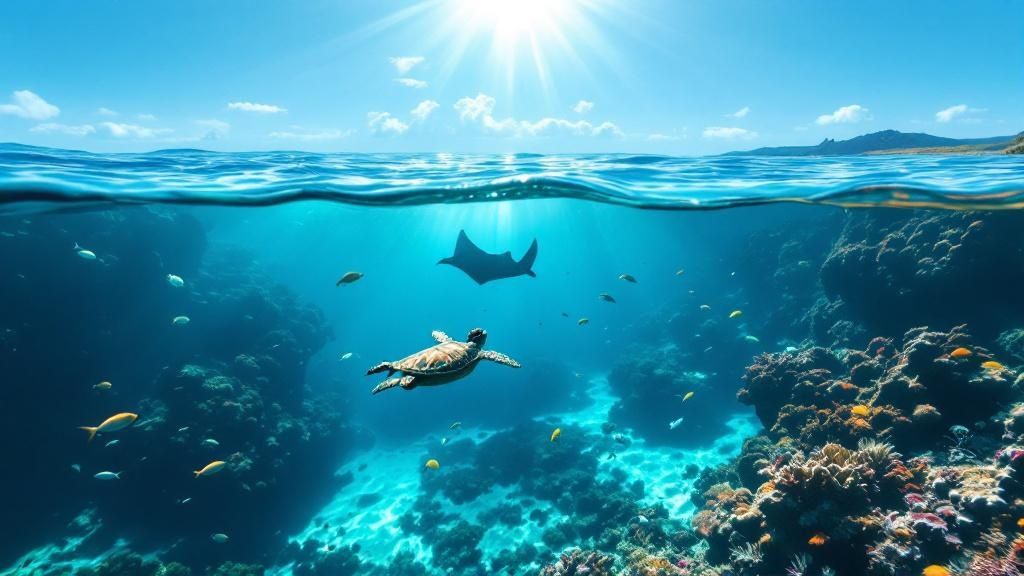
Welcome to your complete guide to the underwater wonders of Hawaii's Big Island, a world-renowned snorkeling destination. The best Big Island snorkeling tours blend incredible wildlife encounters with a bit of historical exploration, from the famous Manta Ray Night Snorkel to the pristine waters of Kealakekua Bay. These adventures are expertly guided to ensure you’re safe while getting a deep dive into Hawaii's unique marine ecosystems.
As your expert guides for these adventures, let's introduce Kona Snorkel Trips, the top rated & most reviewed snorkel company in Hawaii. Their commitment to small-group tours and safety first means you get a personal and unforgettable experience.
Your Guide to Big Island's Underwater Paradise
The Big Island is something special—an island forged by fire and now surrounded by an aquatic kingdom teeming with life. Its volcanic geography has carved out an underwater landscape you won't find anywhere else, with crystal-clear waters, vibrant coral reefs, and dramatic lava rock formations. If you have any passion for exploring the ocean, taking one of the many Big Island snorkeling tours is an absolute must.
Think of this guide as your first step into that world. We'll show you the most iconic experiences waiting for you just beneath the waves.
Why Choose a Guided Snorkel Tour
Sure, you can snorkel from shore at some spots, but a guided tour opens up a whole different level of discovery and convenience. Here’s why booking with a pro is the best way to really experience the Big Island’s underwater treasures:
- Access to Premier Locations: Many of the best spots, like the Captain Cook Monument, are really only accessible by boat.
- Expert Knowledge: Lifeguard-certified guides don't just keep you safe; they share historical context, point out marine life, and let you in on local secrets you'd otherwise completely miss.
- All-Inclusive Convenience: High-quality gear, safety equipment, and often snacks and drinks are all provided. It makes for a totally hassle-free day on the water.
Unforgettable Marine Encounters
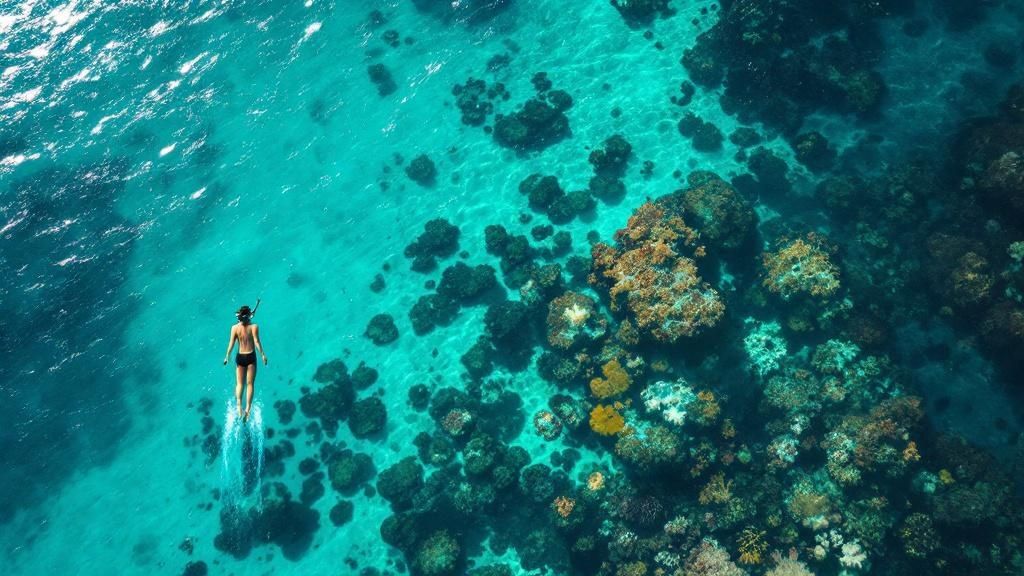
The Big Island is famous for its incredible snorkeling, drawing people from all over the world. Kealakekua Bay, in particular, is one of the island's most storied sites, known for its unbelievably clear water and massive schools of fish. You’ll almost always spot Hawaiian green sea turtles gliding by the vibrant coral reefs. You can see more top spots on this Big Island snorkeling map.
This guide will walk you through the most sought-after adventures, including the magical Manta Ray Night Snorkel and the historic journey to the Captain Cook Monument. To make sure your adventure is both fun and safe, it's a good idea to brush up on some important snorkeling safety tips.
Get ready to book an unforgettable tour and dive into paradise.
Explore History at the Captain Cook Monument
There are some spots on the Big Island that just stick with you. They’re more than just a pretty beach or a good place to swim; they have a certain weight to them. Kealakekua Bay, home to the Captain Cook Monument, is one of those places. It's where incredible natural beauty and a heavy dose of Hawaiian history crash into each other, and taking a trip here is like snorkeling through a story.
This isn't just any bay. Kealakekua is a protected Marine Life Conservation District, which is a formal way of saying it's an underwater paradise. Because fishing is heavily restricted, the fish populations have absolutely exploded. You're pretty much guaranteed to find yourself surrounded by massive, shimmering schools of colorful fish. It's a vibrant, thriving ecosystem.
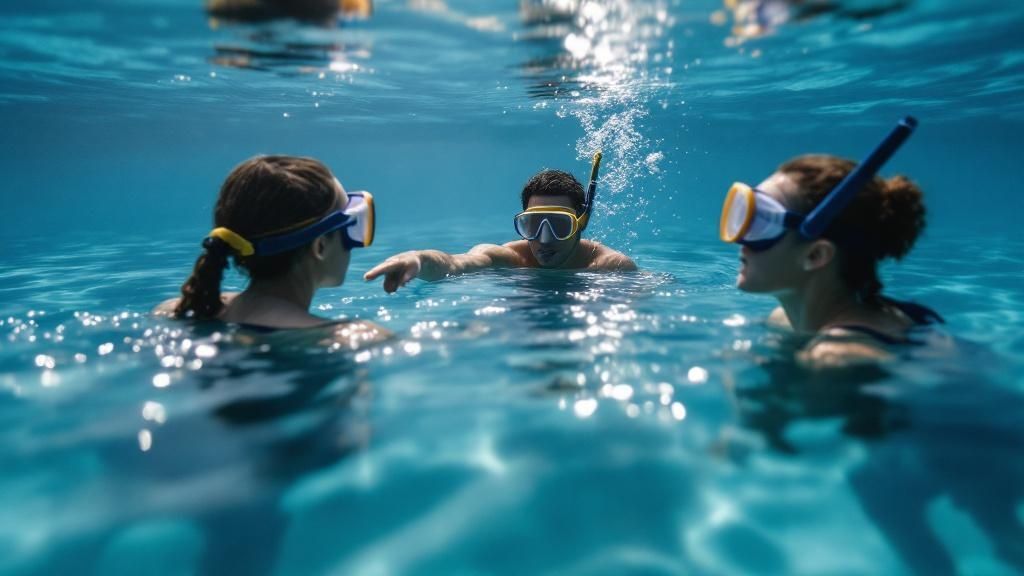
That protected status is a huge reason the water clarity here is legendary. I'm not exaggerating when I say visibility can often push past 100 feet. It really feels like you're flying over a submerged city built of coral. The bay is also naturally sheltered, making the water calm—perfect for everyone from first-timers to seasoned pros.
A Journey Into Hawaii's Past
So, what makes this place so special beyond the amazing snorkeling? History. This is where the British explorer Captain James Cook first made landfall on the Big Island back in 1779. His timing was uncanny—he arrived right in the middle of the Makahiki festival, a sacred period honoring the god Lono. The Hawaiians, seeing this arrival, believed Cook could be Lono himself and welcomed him as a deity.
But that peaceful beginning didn't last. Cook's crew had to return for repairs after leaving, but by then, the Makahiki had ended. The mood shifted, tensions flared, and it all culminated in a tragic conflict on the shoreline where Captain Cook was killed.
Today, a stark white obelisk—the Captain Cook Monument—stands right at the water's edge, marking this pivotal spot. Seeing it from the water as you snorkel creates a powerful link to the past. It turns a simple swim into something much more profound.
Why A Guided Tour Is Essential
Here’s the thing about visiting this monument: you can’t just drive up and park. The monument sits on the opposite side of the bay from any roads. Your only option on foot is a long, hot, and seriously strenuous hike down a steep cliff. Trust me, a boat tour is the way to go.
Here's why hopping on a guided boat tour is the best call:
- Effortless Access: You get a comfortable boat ride straight to the best part of the bay. No sweat, no exhaustion—just pure enjoyment.
- Expert Guidance: The crew doesn’t just hand you fins. They provide top-notch gear, safety briefings, and, most importantly, they bring the history to life with incredible stories about Captain Cook and the bay.
- Wildlife Sightings: The trip down the Kona coast is part of the adventure! We often spot pods of spinner dolphins playing in our wake, and during the winter months, you might even see humpback whales.
Joining a tour gives you a much richer experience. The guides know the marine life and the complex history inside and out, offering context you'd never get on your own. For a deeper dive into what a tour is like, check out our complete guide on snorkeling the Captain Cook Monument.
Planning Your Historical Snorkel Adventure
Because this spot is so famous and protected, you really need to plan ahead. The best tours, especially the small-group ones that feel more personal, fill up fast. Booking your trip in advance is the best way to lock in your spot and make sure it fits into your vacation schedule.
Ready to swim through a piece of history and see some of Hawaii’s most spectacular coral reefs? This is one Big Island adventure you don’t want to miss.
Experience the Magic of the Manta Ray Night Snorkel
Forget everything you think you know about snorkeling. The Manta Ray Night Snorkel isn't just one of the best Big Island snorkeling tours—it's a world-renowned wildlife encounter that feels like stepping into another dimension. If you're looking for an experience that connects you to the ocean in a way you'll never forget, this is it.
Picture this: you're floating effortlessly on the dark, calm Pacific waters just after sunset. The only illumination comes from a custom-built light board you hold onto, which casts a bright cone of light into the depths. This light acts like a magnet for microscopic plankton, creating a floating, all-you-can-eat buffet. And the guests of honor are about to make their grand entrance.
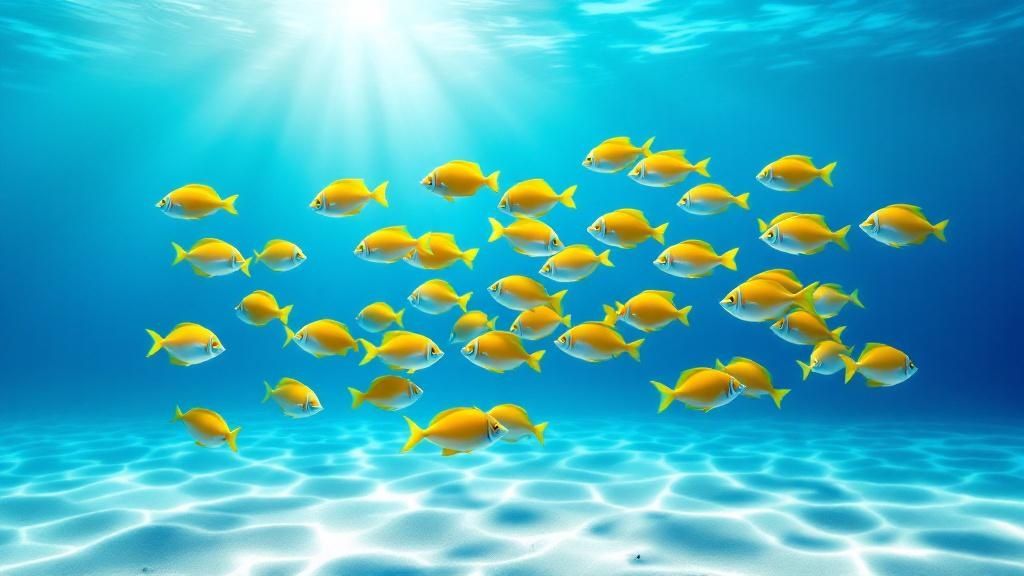
A Ballet Beneath the Waves
At first, there's just darkness. Then, a massive, shadowy figure emerges from the deep, followed by another, and another. These are the majestic manta rays, the gentle giants of the sea. With incredible wingspans reaching up to 16 feet, they glide gracefully through the water, performing an underwater ballet just inches below you.
They swoop and barrel roll, soaring through the light-filled water with their enormous mouths open to filter feed on the plankton. It’s a breathtakingly intimate performance. These creatures come impossibly close, yet they move with such astounding precision they never touch you. It’s an immersive, humbling, and utterly magical encounter.
Your Safety Is the Top Priority
We get this question all the time: is it safe? The answer is a resounding yes. There's a reason everyone calls them "gentle giants."
- No Teeth, No Stingers: Manta rays are filter feeders. They have no teeth, no barbs, and no stingers, making them completely harmless to people.
- Professionally Managed: Every trip is led by a professional, lifeguard-certified crew that puts your safety above all else.
- Secure Floating Boards: You'll be holding onto a custom-designed, stable light board, allowing you to float comfortably on the surface with zero effort.
The whole experience is built to be safe, comfortable, and awe-inspiring for guests of all ages and swim levels. Before you even get in the water, the crew provides a thorough safety briefing and stays with you the entire time to make sure everyone feels secure.
Watching these massive, gentle animals feed so closely is a powerful reminder of the beauty and intelligence of marine life. This isn't just another tour—it's a core memory that will stick with you for a lifetime.
Manta ray snorkeling is a true hallmark of the Big Island, especially along the Kona coast where the conditions are perfect. The best operators, like Kona Snorkel Trips, are part of a community with decades of experience and an incredible success rate of over 90% for manta sightings. This makes it one of the most reliable wildlife experiences you can find anywhere.
Choose an Eco-Conscious Tour
When you book the acclaimed Kona Snorkel Trips Manta Ray tour, you're supporting an operator known for its eco-conscious practices. They follow strict guidelines to ensure the safety and well-being of the mantas, making the encounter sustainable and respectful. This commitment helps protect these magnificent animals for generations to come.
To get a better sense of what the night holds, check out our detailed guide on the Manta Ray Night Snorkel experience.
This is one of the premier activities on the Big Island, and it sells out fast. Don't miss your chance to be part of the magic.
Choosing Your Snorkel Adventure: Guided Tour vs. DIY
So, you're dreaming of the Big Island's underwater world, but you've hit the classic traveler's crossroads: should you book one of the many Big Island snorkeling tours, or grab some gear and go it alone? The right answer really boils down to the kind of day you want to have. Both have their merits, but they're completely different experiences—think of it like the difference between a meticulously planned, gourmet meal and a spontaneous, freewheeling picnic.
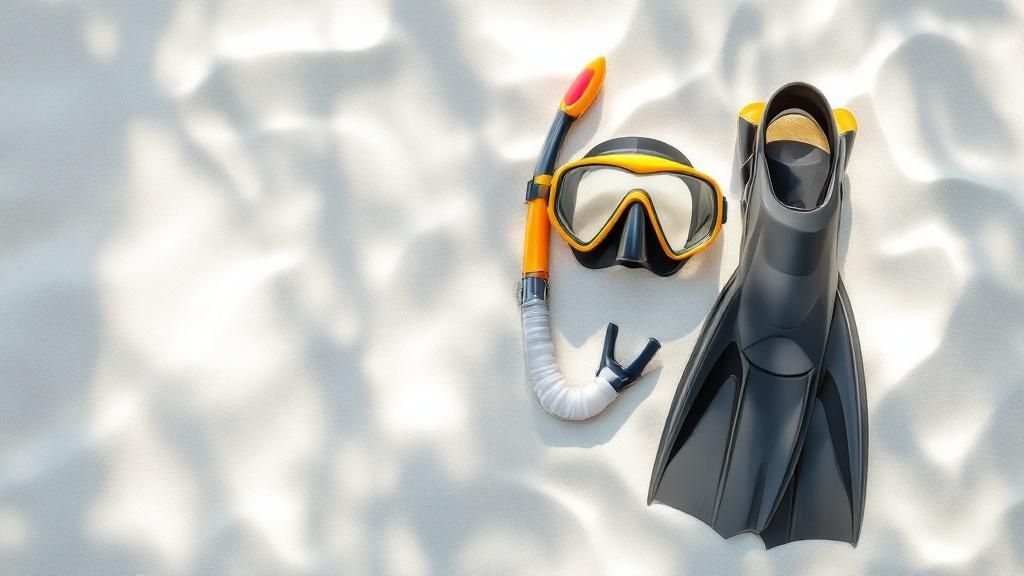
The Case for a Guided Snorkel Tour
When you opt for a guided tour with a top-notch company like Kona Snorkel Trips—Hawaii's most-reviewed and highest-rated snorkel operator—you’re basically buying an all-access pass to the best of the ocean, with zero hassle. It's all about maximizing your time in the water and soaking up the experience.
First and foremost, safety is handled. You're with lifeguard-certified guides who live and breathe these waters. They know the currents, the conditions, and how to keep everyone comfortable.
Plus, tours get you to places you simply can't reach otherwise. Premier spots like the historic Kealakekua Bay are practically impossible to access from shore. A boat gets you there in comfort and style, with all the high-quality gear—masks, fins, float belts—ready to go. This makes it a fantastic choice for every skill level, from total beginners to seasoned pros.
But the real magic of a guided tour? It’s the local knowledge. The crew doesn’t just drive the boat; they share stories, point out that shy octopus hiding in plain sight, and make sure you see the most vibrant parts of the reef. A simple swim becomes a rich, living adventure.
The Perks of DIY Shore Snorkeling
On the flip side, do-it-yourself (DIY) snorkeling offers its own brand of freedom. This is the go-to for the spontaneous traveler who likes to set their own schedule. You can pick a beach that looks good, rent some gear from a local shop, and just hop in the water whenever the mood strikes.
This approach is also easy on the wallet. Free snorkeling on the Big Island has become a popular way for travelers to experience Hawaii's incredible underwater scenery without the price tag of a tour. Accessible spots like Hōnaunau Bay (better known as Two Step) and Kahalu'u Beach Park offer crystal-clear water and tons of fish right off the beach. You can learn more about the island's free snorkeling sites and how to enjoy them.
A Side-by-Side Comparison
Still on the fence? Let's put these two options head-to-head to see how they stack up. This table breaks down what you get with a professional tour versus a self-guided day.
Guided Tour vs. DIY Snorkeling on the Big Island
| Feature | Guided Snorkel Tour | DIY Shore Snorkeling |
|---|---|---|
| Access | Boat access to premier, remote sites like Kealakekua Bay. | Limited to shore-accessible beaches and coves. |
| Safety | Lifeguard-certified crew, safety briefings, and in-water guides. | Self-reliant; dependent on your own skill and ocean awareness. |
| Equipment | All high-quality gear, including flotation devices, is provided. | Requires renting or bringing your own gear. |
| Experience | Expert commentary on history, culture, and marine biology. | A purely personal and self-directed exploration. |
| Convenience | All-inclusive, often with snacks and drinks. Just show up and enjoy. | Requires planning, gear transport, and site research. |
| Cost | Higher upfront cost for a premium, all-inclusive experience. | Lower cost, with main expenses being gear rental. |
Ultimately, while DIY snorkeling is great for a quick, budget-friendly dip, it just can't compete with the depth, safety, and exclusive access of a professionally guided tour. If you want to experience iconic locations like the pristine reef at the Captain Cook Monument, a guided tour isn’t just an option—it’s the best way to do it right.
Ready to book an adventure that guarantees safety, convenience, and access to the best spots?
Snorkel with Respect and Protect Hawaii's Reefs
The underwater world off the Big Island is an absolute treasure, but it's also incredibly fragile. When we slip into that warm, blue ocean, we’re not just visitors; we're guests in a delicate home. It all comes down to a core Hawaiian value: 'Mālama ʻĀina', which means to care for and nurture the land and sea. This isn't just a saying—it's a way of life, and for us snorkelers, it's our guiding principle. The goal is simple: leave nothing behind but bubbles, and take nothing but incredible memories.
Jumping on one of the Big Island snorkeling tours isn't just about having a blast (though you'll definitely do that!). It’s a chance to put 'Mālama ʻĀina' into practice. Every choice you make, from the sunscreen you slather on to how you act around the sea life, has a real impact on the future of these vibrant coral reefs.
Your Role in Reef Preservation
Becoming a guardian of the reef is easier than you think. It just takes a few simple, conscious actions that make a world of difference. When we all do our part, we ensure this underwater spectacle is here for everyone to enjoy for years to come.
- Use Reef-Safe Sunscreen: This one's a biggie. Your typical sunscreen is loaded with chemicals like oxybenzone and octinoxate, which are poison to coral. Make the switch to a mineral-based sunscreen that uses zinc oxide or titanium dioxide. It’s a small change for you but a massive win for the reef, helping to prevent the chemical pollution that causes coral bleaching.
- Never Touch the Coral: It might look like a bunch of colorful rocks, but coral is a living, breathing animal. The slightest touch from a hand or even a fin kick can damage its protective outer layer, making it sick. Keep a safe distance and always be aware of where your fins are.
It all boils down to one simple rule: Look, but don’t touch. By keeping your hands and fins to yourself, you actively become part of the solution, helping to protect Hawaii's underwater paradise.
Respecting Hawaii's Marine Life
Snorkeling here gives you a front-row seat to see some amazing local residents, like the serene Hawaiian green sea turtle (honu) and the acrobatic spinner dolphins (naiʻa). Sharing the water with them is a true privilege, and we need to treat them with the respect they deserve.
Give them their space. Stay at least 10 feet away from sea turtles and a good 50 yards from dolphins. Chasing or trying to touch them is a huge no-no; it stresses them out and interrupts important things like feeding and resting. Let them be in charge. If a curious turtle decides to cruise by for a closer look, just soak in the moment without reaching out. To get a better idea of where you might find these incredible animals, you can check out our Big Island Hawaii snorkeling map.
When you go with a tour operator like Kona Snorkel Trips, you're choosing a team that lives and breathes these sustainable practices. Our guides are passionate about teaching guests 'Mālama ʻĀina' and lead by example on every trip. This way, your vacation becomes more than just a good time—it becomes a meaningful contribution to keeping this special place pristine.
Your Snorkeling Tour Questions Answered
When you're piecing together the perfect Big Island vacation, a few questions are bound to pop up, especially when it comes to amazing adventures like snorkeling tours. We get it. You want to make sure everything is just right. So, we've put together answers to the questions we hear most often to help you book with total confidence.
What’s the Best Time of Year for Snorkeling?
Here’s the fantastic news: there's really no bad time to snorkel on the Big Island. The Kona coast, where most of the best spots are, is naturally sheltered from the trade winds. That means we get blessed with calm, clear water pretty much year-round.
If you’re dreaming of those perfectly flat, glassy sea conditions, the summer months from about April to October are your best bet. But don't count out the winter! From November through March, it's humpback whale season. You might be on your way to the snorkel spot and see these giants launching out of the water. It’s an incredible bonus.
And for that world-famous Manta Ray Night Snorkel, the success rate stays sky-high all year. Any night is the right night for that bucket-list experience.
Do I Need to Be a Strong Swimmer to Snorkel?
Not at all. This is probably the number one worry we hear, and the answer is a resounding no! You don't need to be Michael Phelps to have an incredible time in the water. Top-tier tour companies like Kona Snorkel Trips—Hawaii's top-rated and most-reviewed snorkel crew—welcome people of all comfort levels.
A professional tour's first priority is always your safety and comfort. They provide top-notch flotation gear, like foam noodles and life vests, which let you float effortlessly on the surface without any effort.
The crews are lifeguard-certified and give a full safety briefing before anyone touches the water. They have guides in the water with you the whole time, ready to lend a hand, point out cool fish, and make sure everyone feels totally secure and is having a blast.
Is the Manta Ray Night Snorkel Safe?
Yes, it's incredibly safe. It’s consistently ranked as one of the best travel experiences on the planet for a reason! Manta rays are true gentle giants. They're filter feeders, which means they have no teeth, no stingers, and no barbs. They are completely harmless to people.
On the tour, your job is simple: hold onto a specially designed light board that floats on the surface. This board's light attracts plankton (manta food), and you just float and watch the magic unfold as the mantas glide and swoop below. The whole thing is closely supervised by a professional crew that’s dedicated to keeping both you and the mantas safe.
Should I Book My Snorkel Tour in Advance?
Absolutely, one hundred percent. The Big Island's best snorkel tours, especially the Captain Cook snorkel adventure and the Manta Ray Night Snorkel, are world-famous. They sell out, often weeks ahead of time.
To avoid the heartbreak of a "sold out" sign, we can't stress this enough: book as far in advance as you possibly can. This is especially true if you’re traveling during peak times like summer vacation or over the holidays. Lock in your spot so you can relax and look forward to your adventure.
